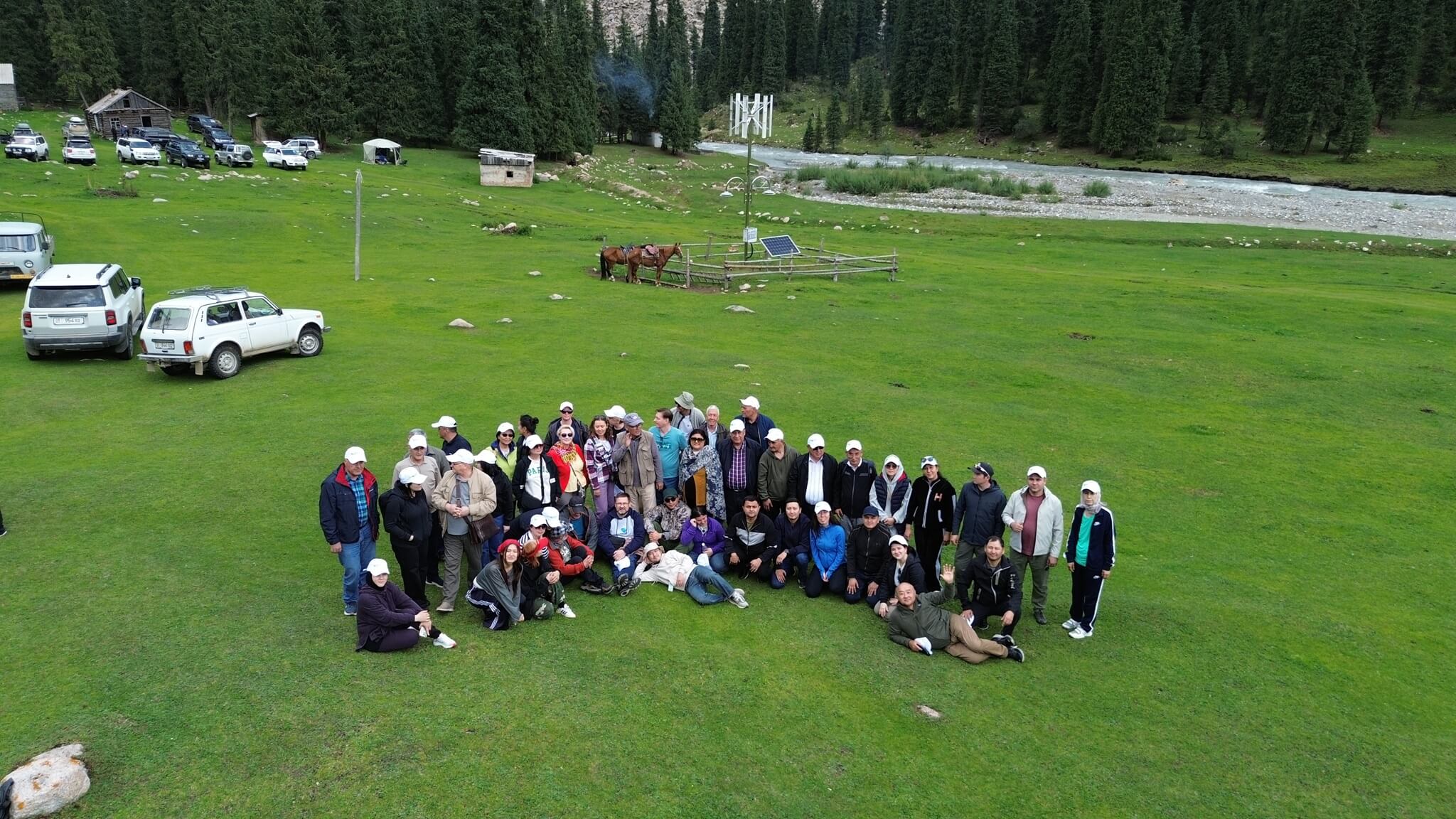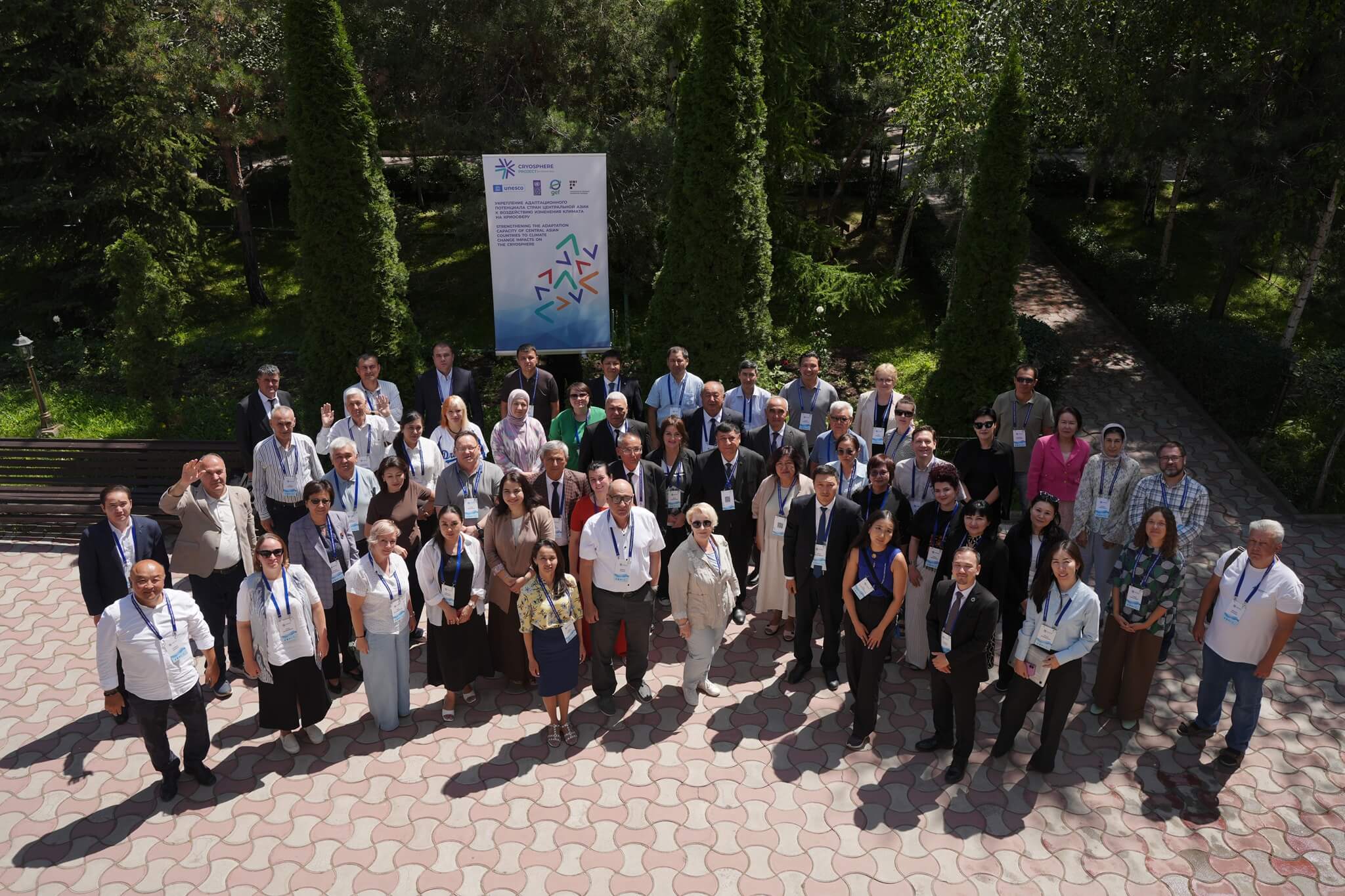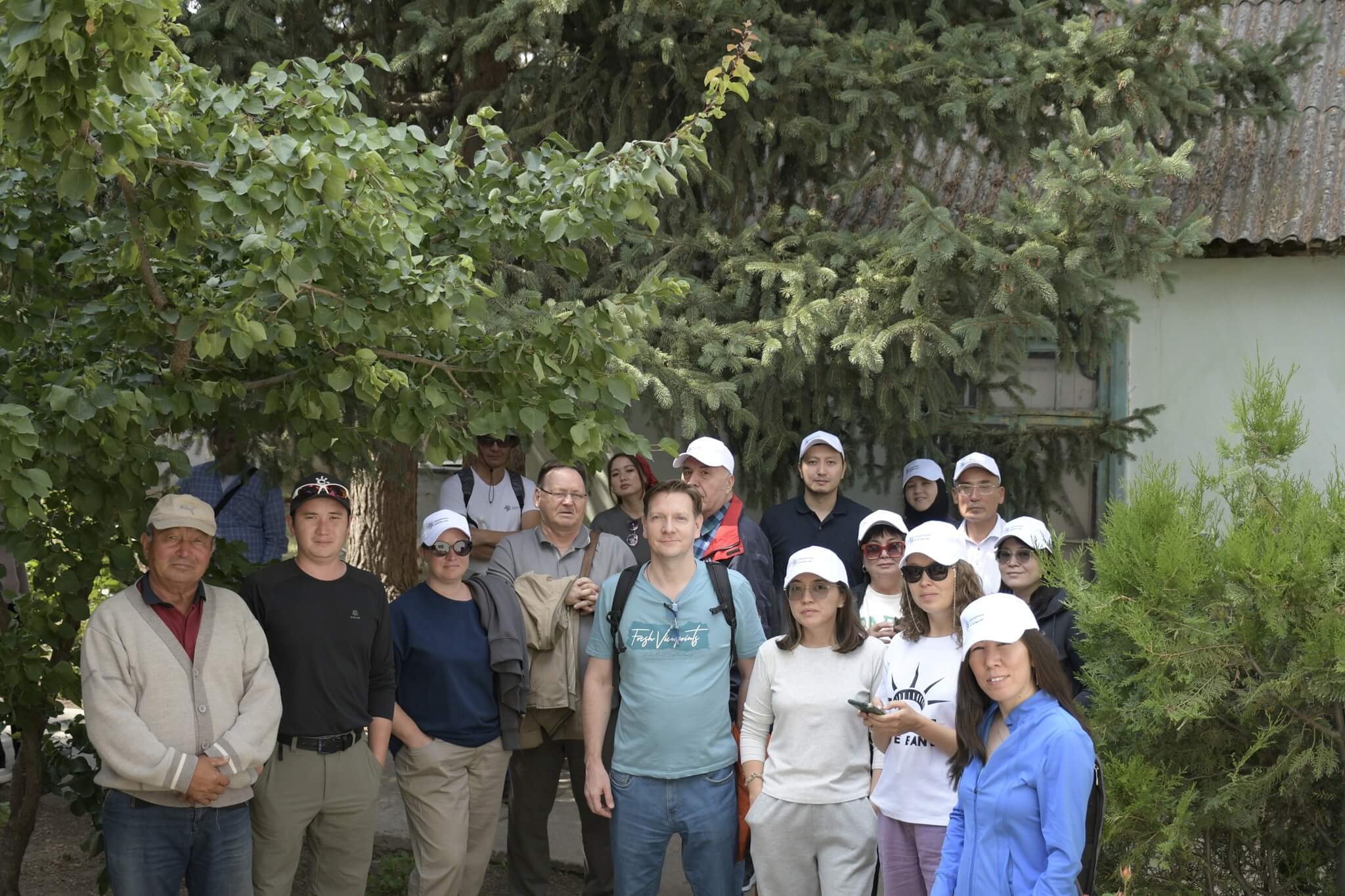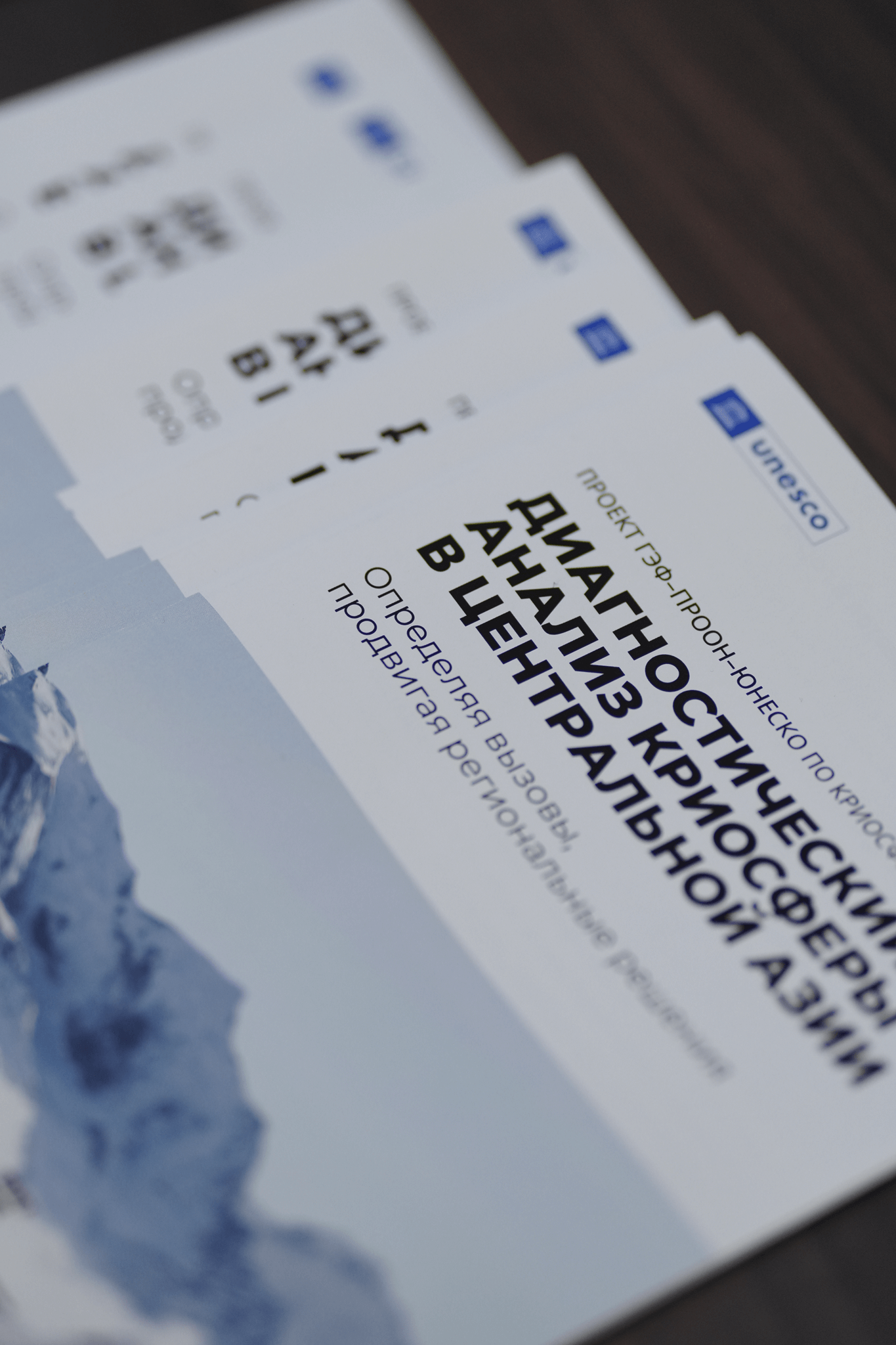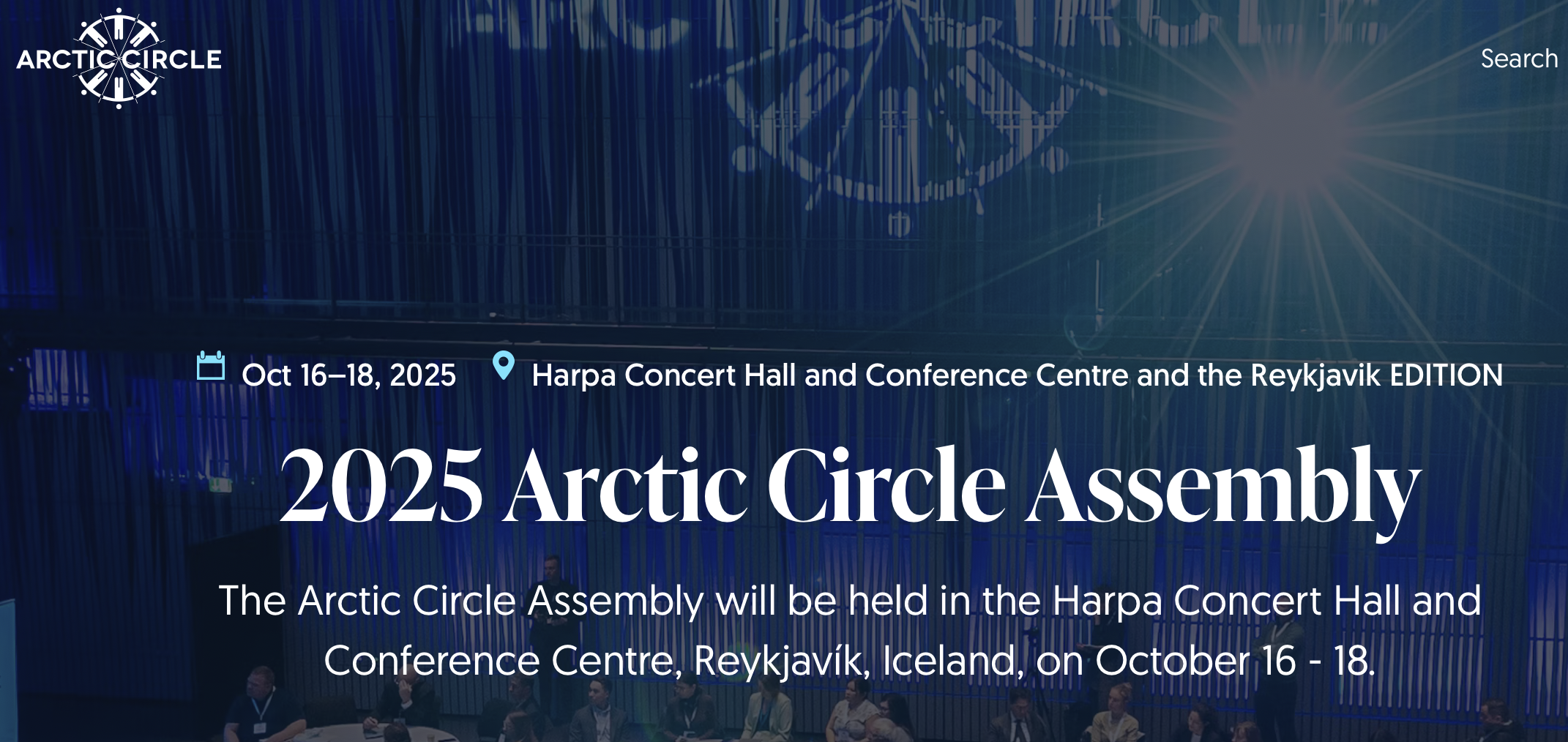On 6–8 August 2025, a subregional workshop took place in the village of Boz-Beshik on Lake Issyk-Kul, Kyrgyz Republic, to develop the Joint Subregional Action Programme (JSAP) under the GEF-UNDP-UNESCO project “Strengthening the Resilience of Central Asian Countries by Enabling Regional Cooperation to Assess Glacio-nival Systems to Develop Integrated Methods for Sustainable Development and Adaptation to Climate Change” (Cryosphere Project in Central Asia).
The event was organized by the UNESCO Regional Office in Almaty in cooperation with national project partners and conducted in line with the Global Environment Facility (GEF) methodology for developing Strategic Action Programmes for transboundary cooperation.
The meeting represents an important step in preparing the JSAP and National Action Plans (NAPs), aimed at addressing priority challenges in cryosphere observation, monitoring, and research in Central Asia. The work was based on the results of the Transboundary Diagnostic Analysis and four thematic studies prepared by research institutions of the participating countries, the University of Fribourg, and regional experts.
The meeting gathered representatives of government agencies, research institutions, and national experts designated to develop and align joint actions under the “Cryosphere Strategic Vision – 2050,” previously agreed at the subregional meeting in Samarkand. The seminar also involved the GLOFCA project team (funded by the Adaptation Fund), implemented by the UNESCO Regional Office in Almaty in Kazakhstan, the Kyrgyz Republic, Tajikistan, and Uzbekistan. GLOFCA representatives contribute to the JSAP and NAPs by providing expertise on reducing disaster risks related to cryosphere changes.
The programme of the meeting included:
-
Discussion by designated experts of a roadmap for strengthening higher education in Central Asia in the field of cryosphere studies (6 August);
-
Development of key tasks and actions under the JSAP (7 August);
-
A technical excursion to the Tien Shan International Mountain Station (8 August) to observe cryosphere monitoring systems in practice.

 Go Back
Go Back